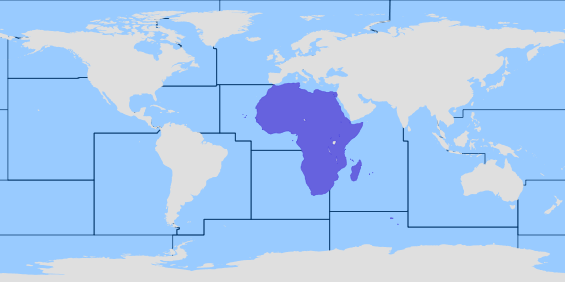Diagnosis: moderate-sized, robust-bodied species; last dorsal simple ray ossified and serrated; 26-29 lateral line scales; no prominent sheath of enlarged scales at the base of the dorsal fin; fins tinted pinkish-orange; midlateral black stripe extends through the caudal fin to the fork, but does not extend onto the snout (Ref. 75045).
Description: body slightly compressed, maximum
depth approximately equal to head length, located
before dorsal fin; nape rises in hump behind head,
particularly in larger specimens; head moderately
deep, four times in standard length; eyes lateral in position, visible from above and below; orbit becoming proportionately smaller in large specimens; snout rounded and short, equal to or slightly shorter than orbit diameter; no tubercles
on the head; nostrils small; short tubular anterior naris adjacent to open posterior naris; nostrils level with dorsal margin of eye and separated from orbit by less than one orbit radius; mouth subterminal, crescentshaped
and reaching to below anterior border of orbit;
lips moderately well-developed; 2 pairs of simple
barbels, anterior slightly shorter than posterior, which is approximately equal to orbit diameter; gill cover opening from level with dorsal margin of orbit, attached ventrally close to isthmus; gill rakers short, stub-like and widely-spaced; pharyngeal bones typical of small African Barbus species with 3 rows of peg-like pharyngeal teeth with pointed cusps (formula 5,3,2 2,3,5); 17-19 abdominal vertebrae; 15-17 caudal vertebrae; 9-10 predorsal vertebrae; 12-13 rib pairs; origin of dorsal fin equidistant between tip of snout and base of caudal fin, above or just behind origin of pelvic fins; dorsal fin becomes relatively shorter with increasing size of specimen, from approximately 30% of standard length in smallest specimens to 20% in largest individuals; anteriormost branched ray of dorsal fin longest; distal margin of dorsal fin concave; last unbranched dorsal ray ossified and fine
 Image not available
Image not available